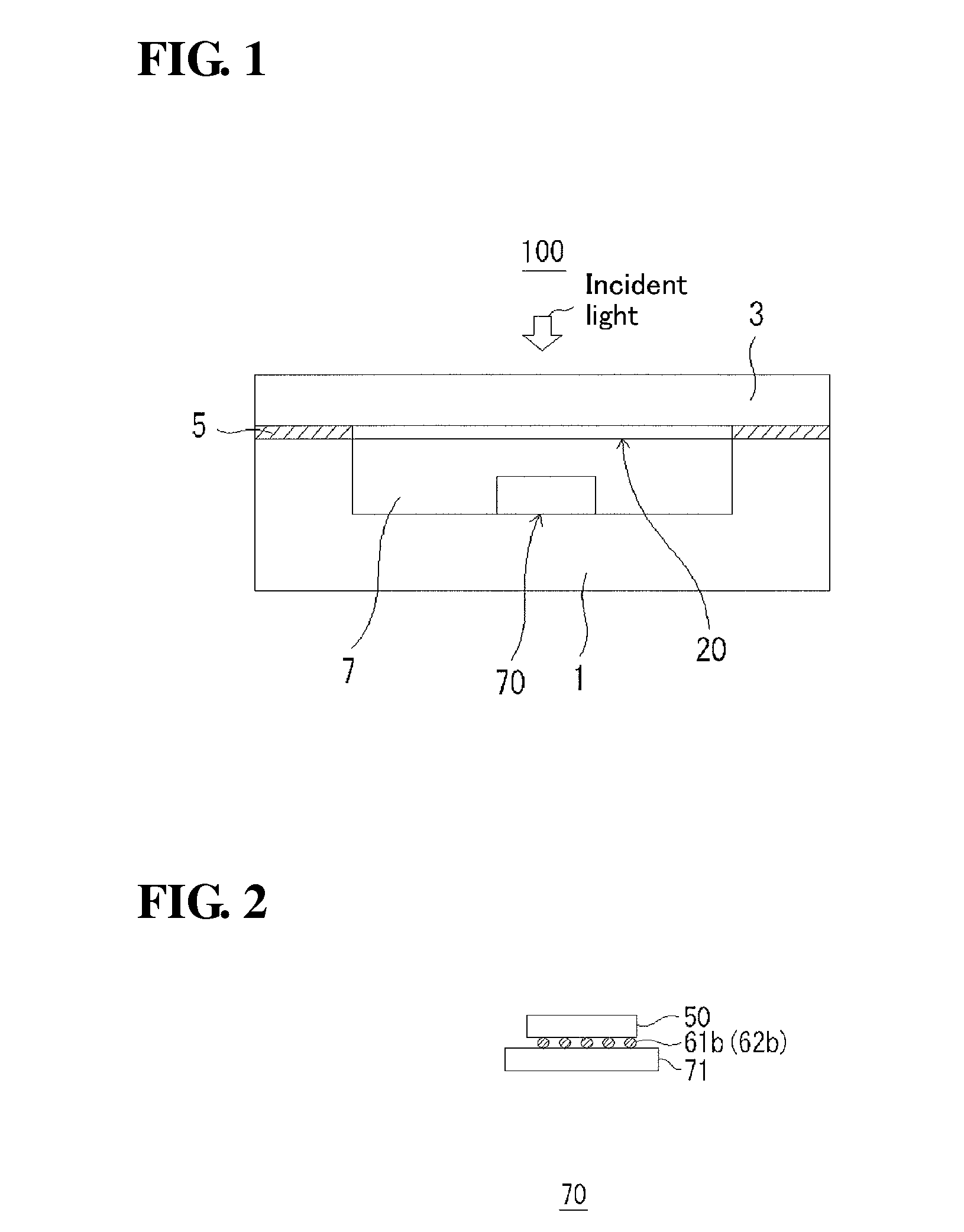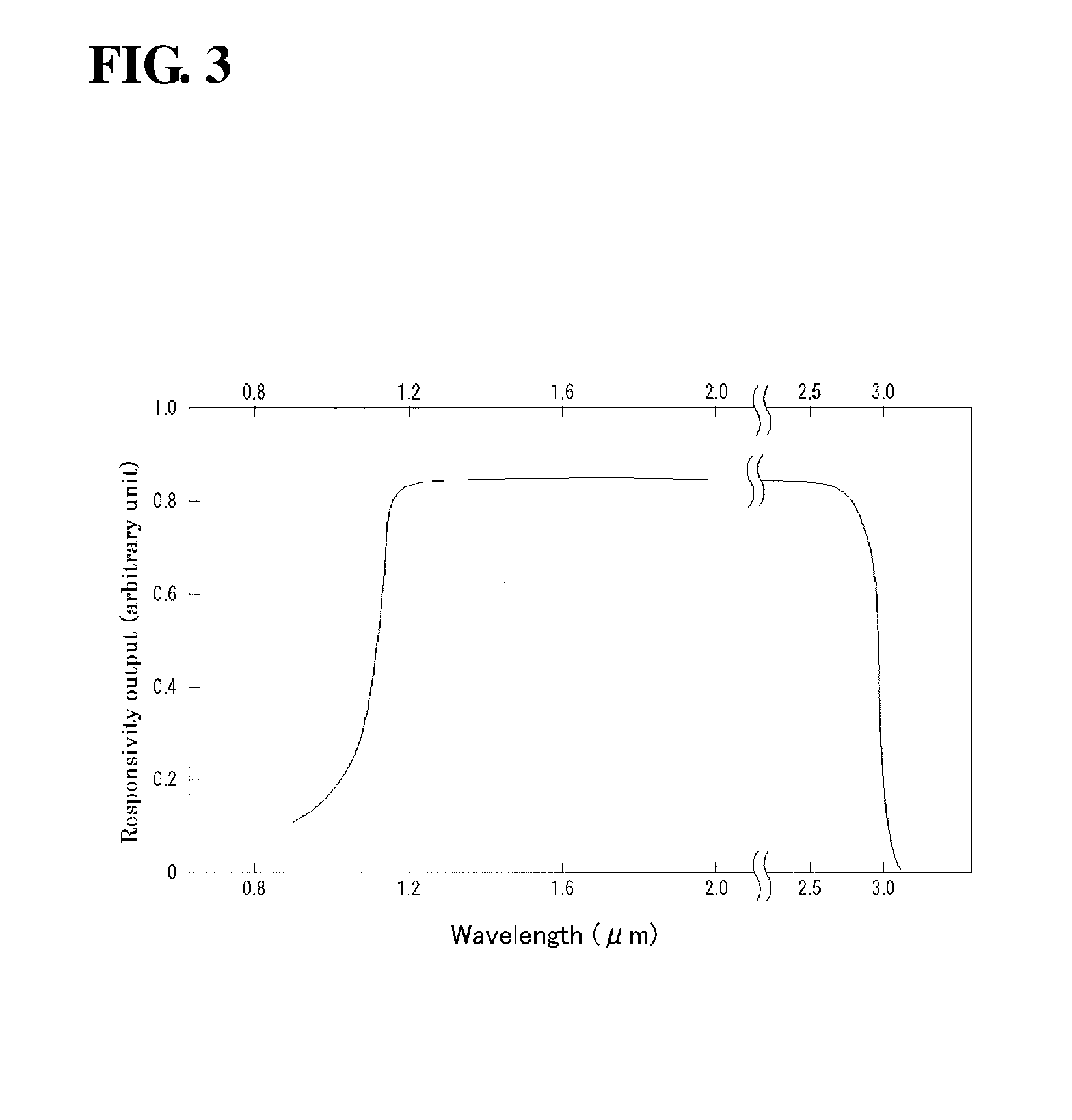Near-infrared imaging sensor
a sensor and near-infrared technology, applied in the field of near-infrared imaging sensors, can solve the problems of low yield, difficult stable manufacture, complicated image pickup system, etc., and achieve the effects of high yield, high reproducibility, and simple structur
- Summary
- Abstract
- Description
- Claims
- Application Information
AI Technical Summary
Benefits of technology
Problems solved by technology
Method used
Image
Examples
Embodiment Construction
[0036]FIG. 1 is a sectional view of a near-infrared imaging sensor 100 according to an embodiment of the present invention. A sensor chip-mounted body 70 includes a photodiode array 50 and a multiplexer 71 which is a signal readout circuit (ROIC) and is fixed on the bottom of a housing main body section 1. The housing main body section 1 is, for example, a blind cylinder such as a blind circular cylinder or angular tube. The housing main body section 1 has an opening located on the light-incident side and the opening is covered with a lid 3. The lid 3 is fixed to the housing main body section 1 with a fixing member 5 made of a solder such as a tin (Sn) eutectic alloy. An inner space 7 is vacuum-sealed; hence, the fixing member 5 needs to have sufficient strength and durability. The lid 3 is made of silicon (Si) and has an optical component 20 disposed on an inner surface thereof.
[0037]FIG. 2 is a schematic view of the sensor chip-mounted body 70. In the sensor chip-mounted body 70, ...
PUM
 Login to View More
Login to View More Abstract
Description
Claims
Application Information
 Login to View More
Login to View More - R&D
- Intellectual Property
- Life Sciences
- Materials
- Tech Scout
- Unparalleled Data Quality
- Higher Quality Content
- 60% Fewer Hallucinations
Browse by: Latest US Patents, China's latest patents, Technical Efficacy Thesaurus, Application Domain, Technology Topic, Popular Technical Reports.
© 2025 PatSnap. All rights reserved.Legal|Privacy policy|Modern Slavery Act Transparency Statement|Sitemap|About US| Contact US: help@patsnap.com



